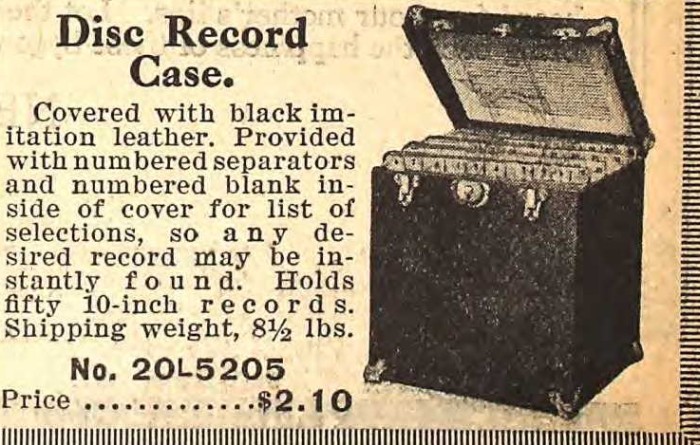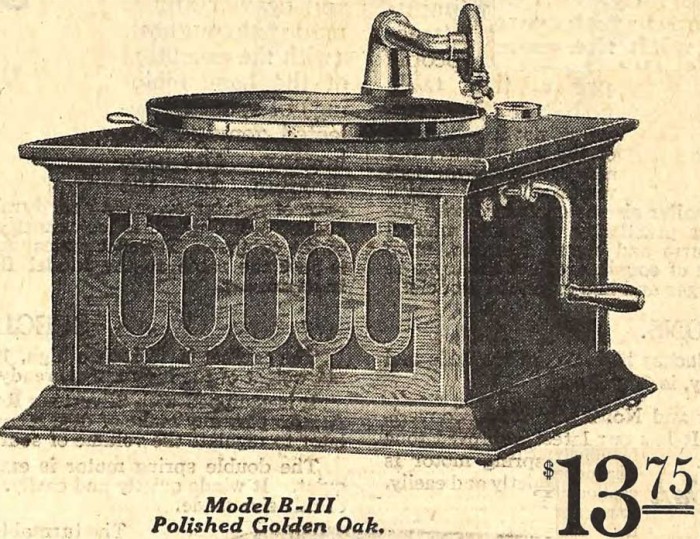1917
With 1,000+ pages in nearly every Sears catalog, it's going to be hard for me to stick with just the Silvertone-branded items, so forgive me if I come across something from over the decades that I've just got to share with you; there were so many fascinating things available from Sears... it was the Amazon.com of its day!Like this 'auto robe.' No heater in the new automobile? What to do when it's cold? Wrap up, of course! Sears had dozens of robes available for use in your flivver. But don't listen to me, let's hear from the lady in the car: "There's little danger of our freezing with this robe!" Great... 'little danger.'
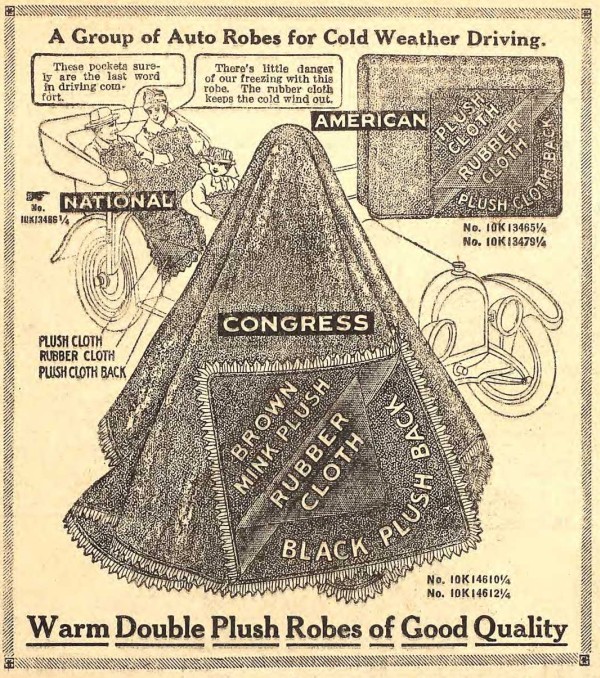
OK, then... how about a nice house? Everyone needs a house! Sears had a few dozen to choose from just in the Fall 1917 catalog, over 100 (barns, too!) if you sent for the 'Honor-Bilt' specialty catalog!
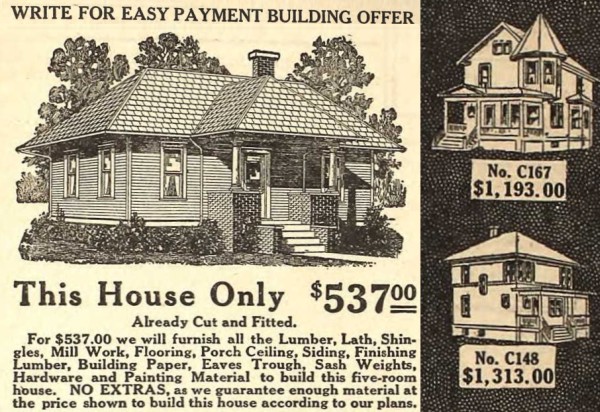
Plenty of floor plans and styles to choose from!
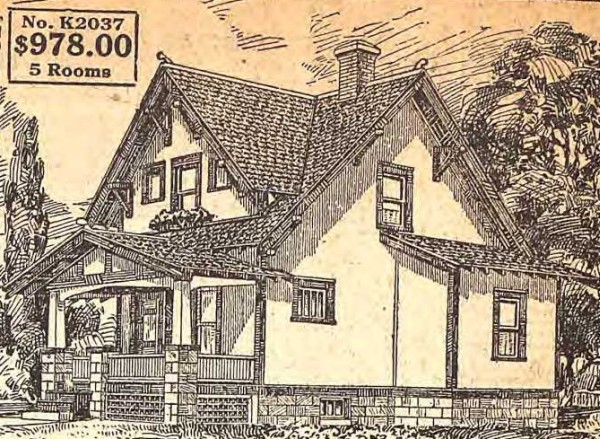
1917
One of the top-of-the-line models was advertised in full color on the back cover of the Fall 1917 catalog, the model B-XVI: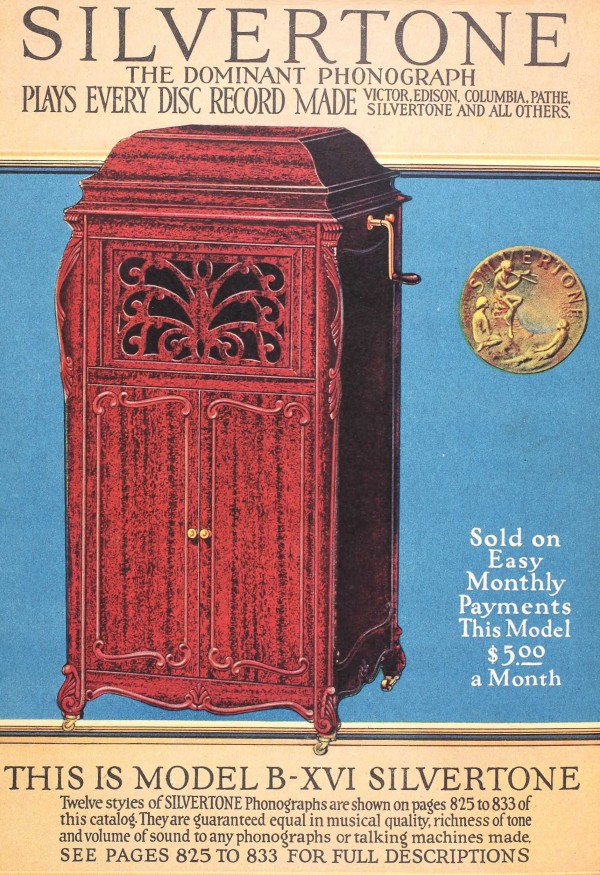 Did
you notice the 'B' up there on the ad? Up until now, it was just the
Roman numeral model number, as shown in our rundown of the initial
1916 models. But now, all Silvertone phonographs have a great big
'B' in front of the model numbers What does it signify?
Did
you notice the 'B' up there on the ad? Up until now, it was just the
Roman numeral model number, as shown in our rundown of the initial
1916 models. But now, all Silvertone phonographs have a great big
'B' in front of the model numbers What does it signify? 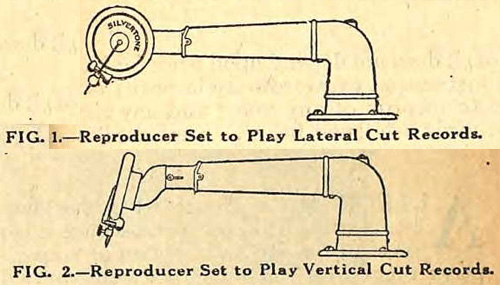
It means that all Silvertone phonographs can now play all types of
records, vertical or lateral cut discs, through means of an
adjustable reproducer head. This was a very big deal for Sears,
and they spared no ink in telling you about it:
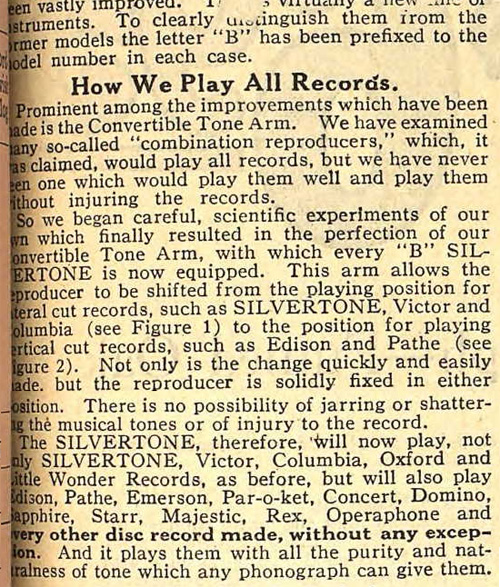
1917
The low-end Model I was still going strong, a couple of bucks more this year, but now able to play every kind of disc with the new 'B' prefix on its model. George Finfrock was quite pleased with his original Model I, and was happy to let Sears know about it.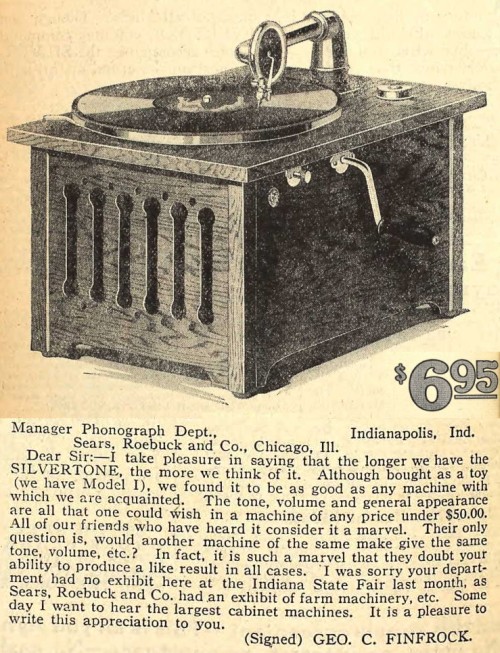
Looks like we finally got ourselves a Model IV.

1918
The big phonographs were given full-page listings, touting all their refinements and appointments, and sold by low monthly installments.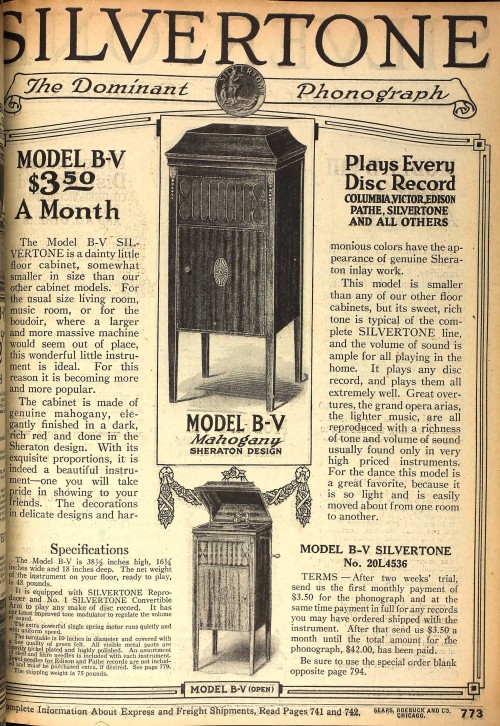
Here's a typical installment plan notice:
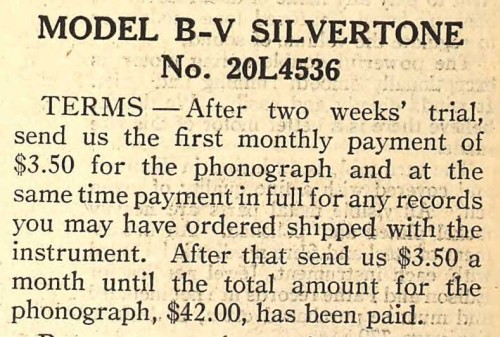
1918
Here's the top of the line for 1918, the "Louis Fifteenth Design" B-XVI, available in mahogany or walnut: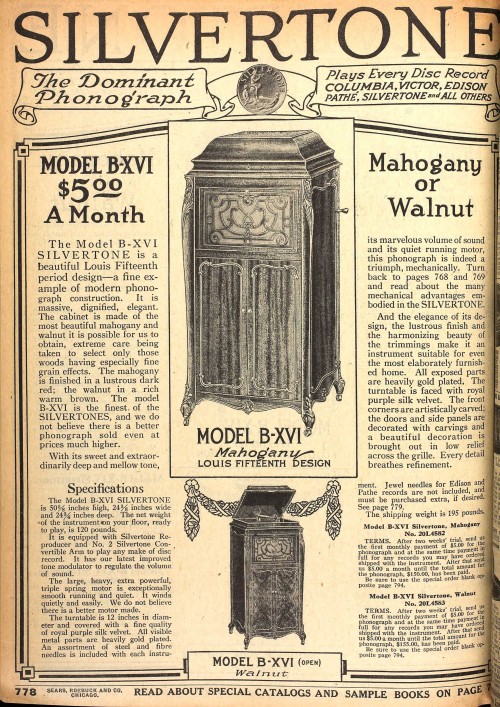 Look
at this listing for needles. I love how Sears tries to talk you out
of buying the diamond point.
Look
at this listing for needles. I love how Sears tries to talk you out
of buying the diamond point. 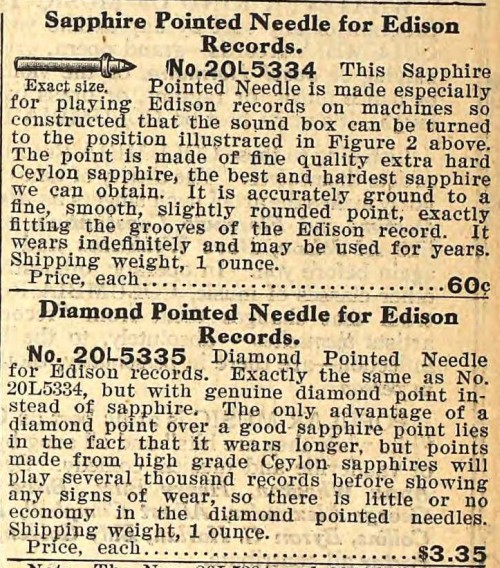
1918
Speaking of needles, in addition to the common steel needles that were changed after every couple of record plays, and the cactus thorn 'Tusko' needles, Sears also sold a fibre needle: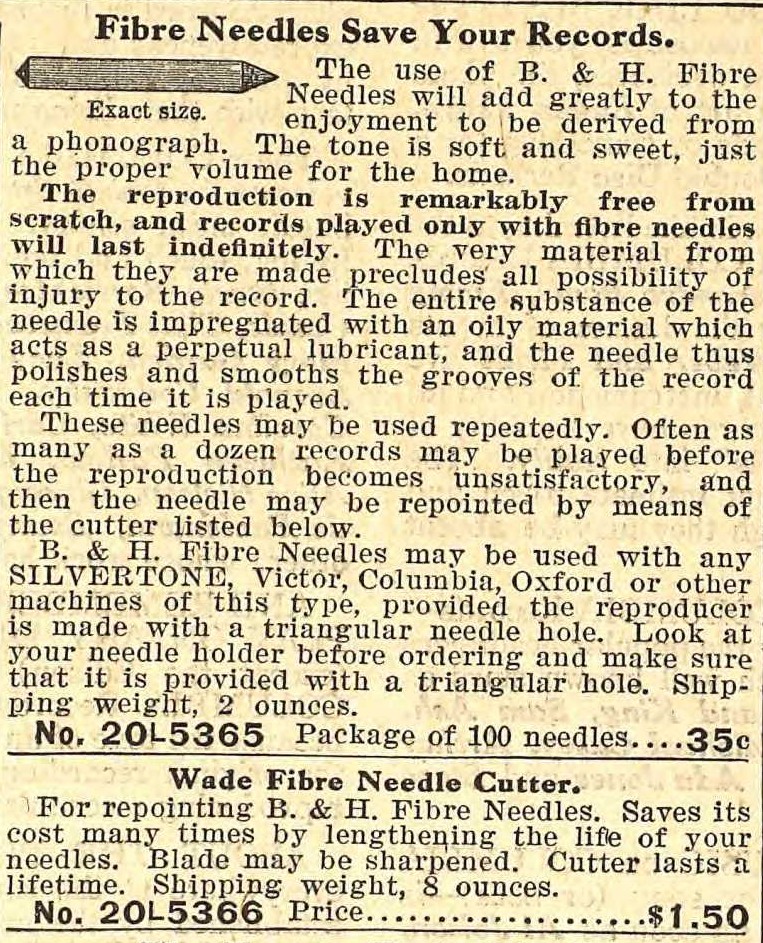
Here's a multi-pack of steel needles, with different needles
recommended for different types of music or playback situations.
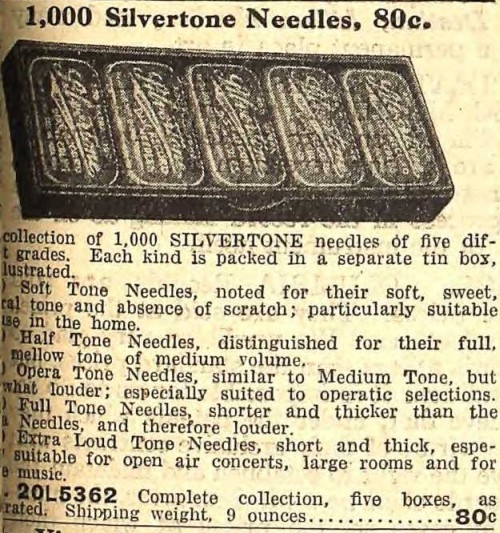
1919
The lowest end of the line is now going by name rather than model number; presenting the 'Junior' and the 'Senior.'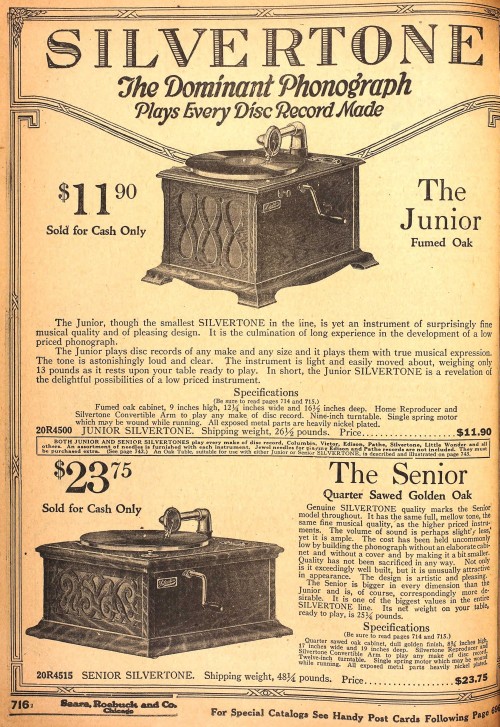
As folks' record collections grew, so did the need for storage. Here's where we get the origin of calling a collection of songs an 'album.'
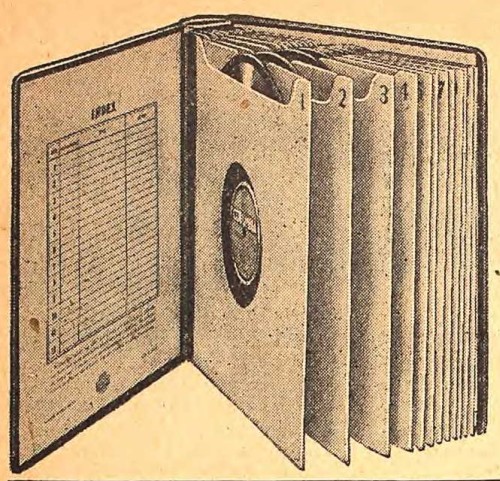
If you didn't want a full collection of the many types of steel needles as seen above in the 1918 section, you could choose your favorite in individual tins:
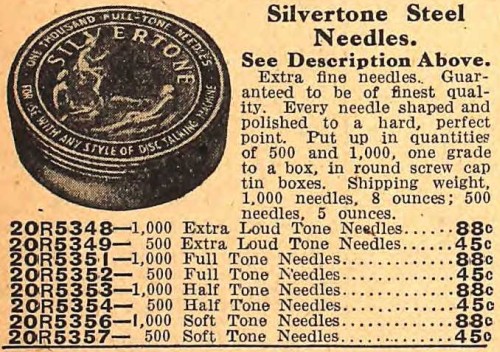
1919
Guitars still going strong: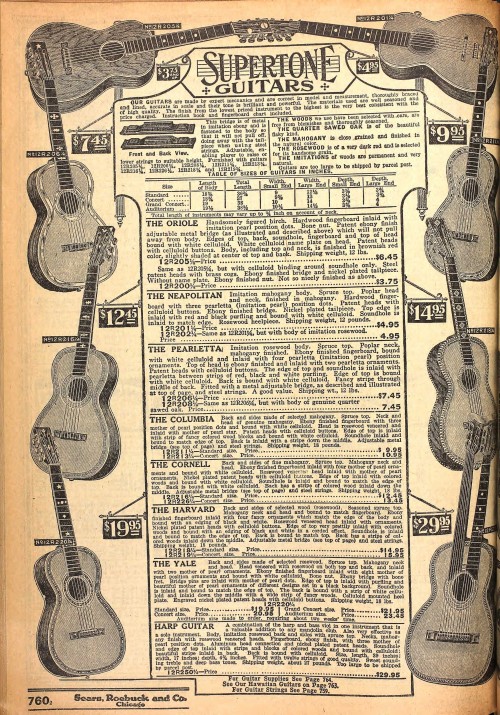 Here's
an interesting bit from the page above; metal bridges!
Here's
an interesting bit from the page above; metal bridges! 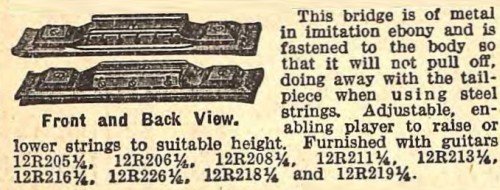
Ukuleles were available in the familiar 4-string and also a few
8-strings versions.

1919
Now that every Silvertone plays every type of disc, they've dropped the 'B' from the model numbers this year.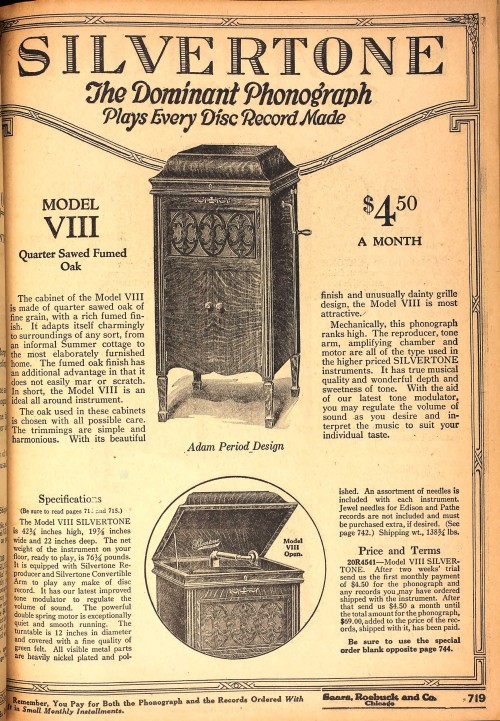
Even though Sears no longer sells the 'old-fashioned' cylinder
machines, they still sell the cylinders in two-minute and
four-minute varieties, with dozens of titles.
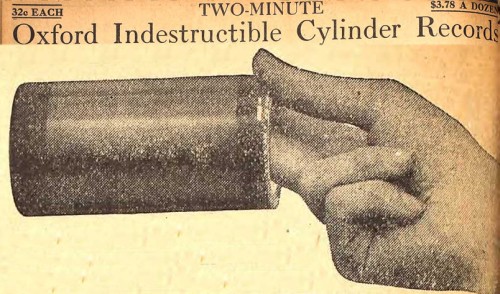
Still no end to the oddball instruments that Sears offered...
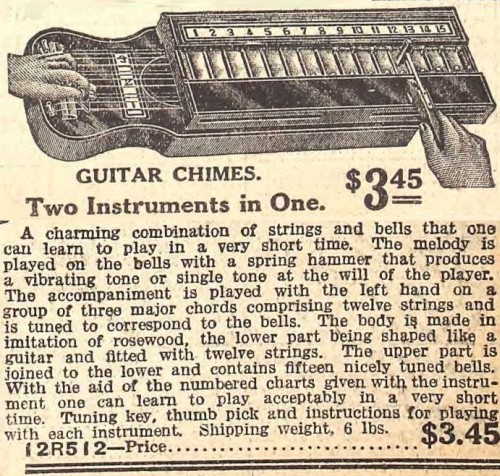
On to 1920

